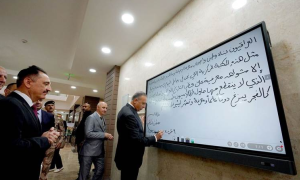sit at, sit in, sit on
这三个短语都可表示“坐在某处”。它们的区别在于:
1.当宾语是table, desk时用介词at; 当宾语是chair, bench, sofa, branch, ground时用介词on; 当宾语是armchair时用介词in。
2. sit in与sit on的意思不同。试比较下面两句:
sit in the grass
坐在草丛里
sit on the grass
坐在草地上
3.作“作委员”“作陪审员”“搁置”解时用sit on; 作“静坐示威”解时用sit in; 作“列席”解时则用sit in on。
sit up for, sit up with
sit up for表示“不睡等(人)”时,含有“期待”的意味; sit up with表示“不睡陪伴(人)”时,含有“照顾”的意味。例如:
I shall be late getting back tonight, so please don't sit up for me.今晚我回来得迟,请不要等我了。
The nurse sat up with her patient all night.护士整晚不睡,照顾病人。
sit, seat
这两个词都有“坐”的意思。它们的区别是:seat作“使就座”解,是及物动词,一般和反身代词连用,或用于被动结构,强调坐在座位上, be seated是正式用语; sit 作“坐”解,与stand(站)相对,一般作不及物动词。例如:
Sit down, please.(请坐)。
此外, seat还有“可容纳若干人”的意思,而sit无此义。例如:
Don't just sit there watching—come and help me!别坐在那儿观看,过来帮帮我的忙吧!
The hall will seat 200.这大厅将能容纳二百人。
sit up, stay up, stop up
这三个短语都可表示“熬夜”。其用法区别在于:sit up和stay up常跟现在分词短语,表示伴随动作; 而stop up常跟动词不定式表示目的。例如:
They sat up all night discussing these questions.他们整宿没睡,讨论这些问题。
We stayed up until midnight talking about our work.我们谈论工作一直到深夜还没睡。
I stopped up to watch the match.我熬夜观看比赛。
下面两个句子的句法结构是不同的:
They sat talking all through the night.
他们通宵地坐着谈论。
He sat in the armchair reading the news- paper.
他坐在扶手椅里读报纸。
第一句sat和talking结合紧密,直接连用,有些语法学家认为sat在这时是系动词, talking是主语补足语,也有些语法学家认为sat是不及物动词, talking是伴随状语,修饰前面的sat。而第二句中He sat in the armchair句意完全, reading the newspaper起状语作用,不可误认为主语补足语。
下面两个短语的意思相同:
sit at one's feet
sit at the feet of
拜某人为师
下面两个句子的意思不同:
Shall we sit here for a moment?
我们在这儿坐一会儿好吗?
Shall we sit down here for a moment?
我们在这儿坐下歇会儿好吗?
seat,sit
这两个动词都含“坐”之意。
seat及物动词,常与反身代词连用,常用过去分词seated形式。
sit多用作不及物动词,用作及物动词时,可与seat换用。










